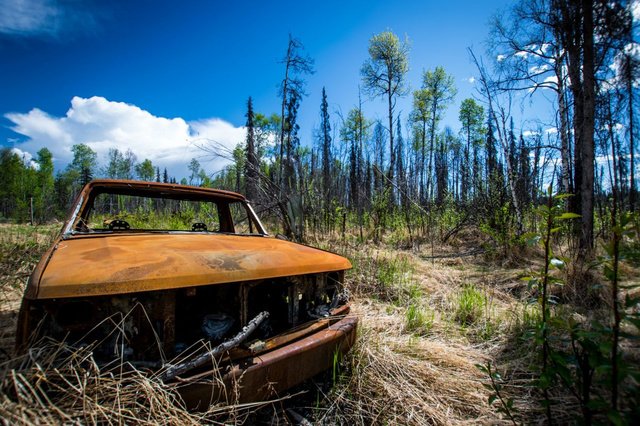Climate scientists at VU Amsterdam have discovered a somewhat special phenomenon in fires in Alaska and other northern regions.
And they found that some fires, which start in the hot summer, can start underground during the winter. Even under a thick layer of snow at temperatures as low as -40 degrees. When the warm, dry weather returns in the spring, they flare up again. Because of this “rising from the dead” these fires are also called “zombie fires”. Because of climate change, researchers say, this strange phenomenon seems to be happening more and more often.
They discovered that “hibernation fires” mainly occur in deeply burned carbon-rich peat soils. “We also see a clear relationship between the warm summers, which create large and intense fires, and the number of fires that succeed in hibernating after that,” the university says.
The study combined field data with satellite imagery to identify winter fires. While these fires remain invisible to satellites in the winter because they ignite underground, they can be observed as they burn above ground in the spring. Researchers have designed an algorithm by which they can clearly distinguish between a hibernation fire and a new “normal” fire caused by lightning or human action.
The research was published Wednesday in the scientific journal Nature.
And they found that some fires, which start in the hot summer, can start underground during the winter. Even under a thick layer of snow at temperatures as low as -40 degrees. When the warm, dry weather returns in the spring, they flare up again. Because of this “rising from the dead” these fires are also called “zombie fires”. Because of climate change, researchers say, this strange phenomenon seems to be happening more and more often. They discovered that “hibernation fires” mainly occur in deeply burned carbon-rich peat soils. “We also see a clear relationship between the warm summers, which create large and intense fires, and the number of fires that succeed in hibernating after that,” the university says. The study combined field data with satellite imagery to identify winter fires. While these fires remain invisible to satellites in the winter because they ignite underground, they can be observed as they burn above ground in the spring. Researchers have designed an algorithm by which they can clearly distinguish between a hibernation fire and a new “normal” fire caused by lightning or human action. The research was published Wednesday in the scientific journal Nature.

“Lifelong food practitioner. Zombie geek. Explorer. Reader. Subtly charming gamer. Entrepreneur. Devoted analyst.”











More Stories
Revealing the ten countries that support Ukraine the most
Funny protest against mass tourism in Galician village
Kamala Harris has wind in her sails, but Trump can still win